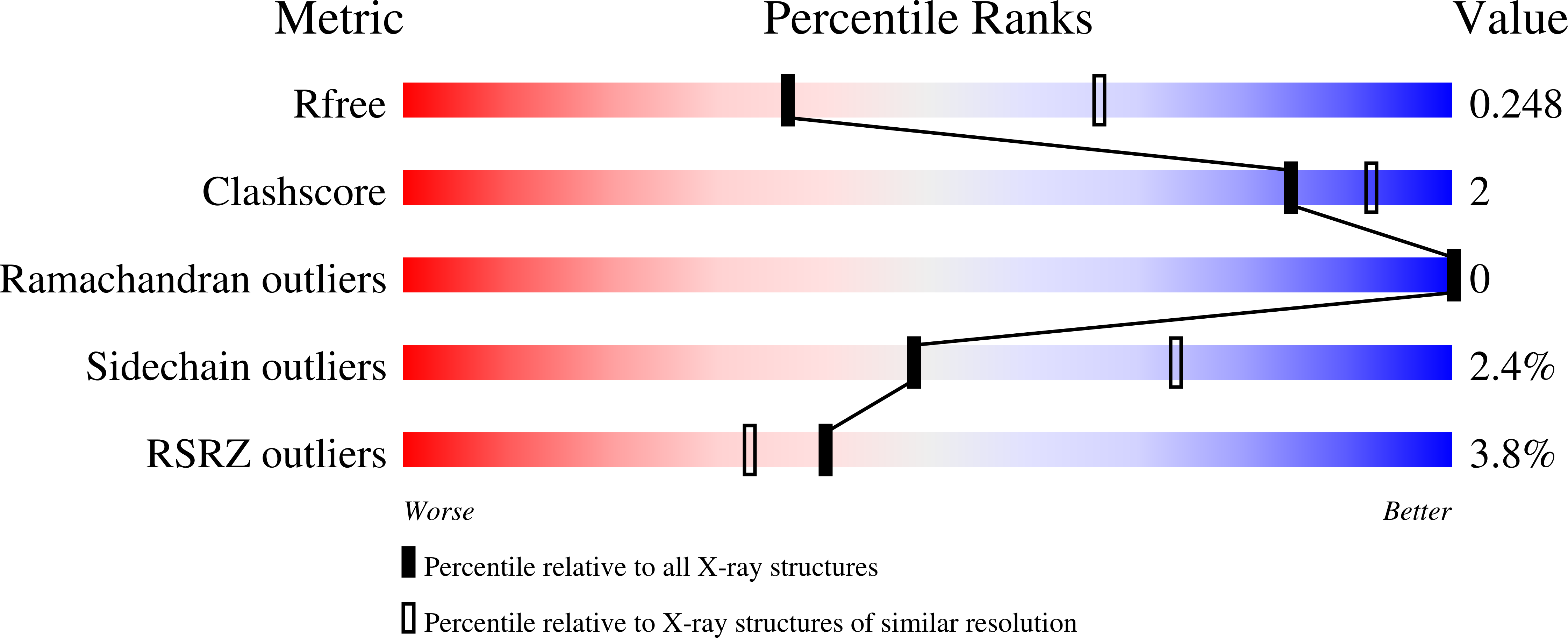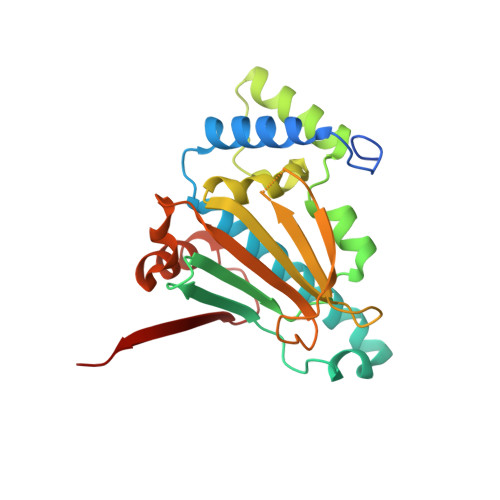Structural basis for species-selective targeting of Hsp90 in a pathogenic fungus.
Whitesell, L., Robbins, N., Huang, D.S., McLellan, C.A., Shekhar-Guturja, T., LeBlanc, E.V., Nation, C.S., Hui, R., Hutchinson, A., Collins, C., Chatterjee, S., Trilles, R., Xie, J.L., Krysan, D.J., Lindquist, S., Porco Jr., J.A., Tatu, U., Brown, L.E., Pizarro, J., Cowen, L.E.(2019) Nat Commun 10: 402-402
- PubMed: 30679438
- DOI: https://doi.org/10.1038/s41467-018-08248-w
- Primary Citation of Related Structures:
6CJI, 6CJJ, 6CJL, 6CJP, 6CJR, 6CJS - PubMed Abstract:
New strategies are needed to counter the escalating threat posed by drug-resistant fungi. The molecular chaperone Hsp90 affords a promising target because it supports survival, virulence and drug-resistance across diverse pathogens. Inhibitors of human Hsp90 under development as anticancer therapeutics, however, exert host toxicities that preclude their use as antifungals. Seeking a route to species-selectivity, we investigate the nucleotide-binding domain (NBD) of Hsp90 from the most common human fungal pathogen, Candida albicans. Here we report structures for this NBD alone, in complex with ADP or in complex with known Hsp90 inhibitors. Encouraged by the conformational flexibility revealed by these structures, we synthesize an inhibitor with >25-fold binding-selectivity for fungal Hsp90 NBD. Comparing co-crystals occupied by this probe vs. anticancer Hsp90 inhibitors revealed major, previously unreported conformational rearrangements. These insights and our probe's species-selectivity in culture support the feasibility of targeting Hsp90 as a promising antifungal strategy.
Organizational Affiliation:
Department of Molecular Genetics, University of Toronto, Toronto, ON, M5G 1M1, Canada.















